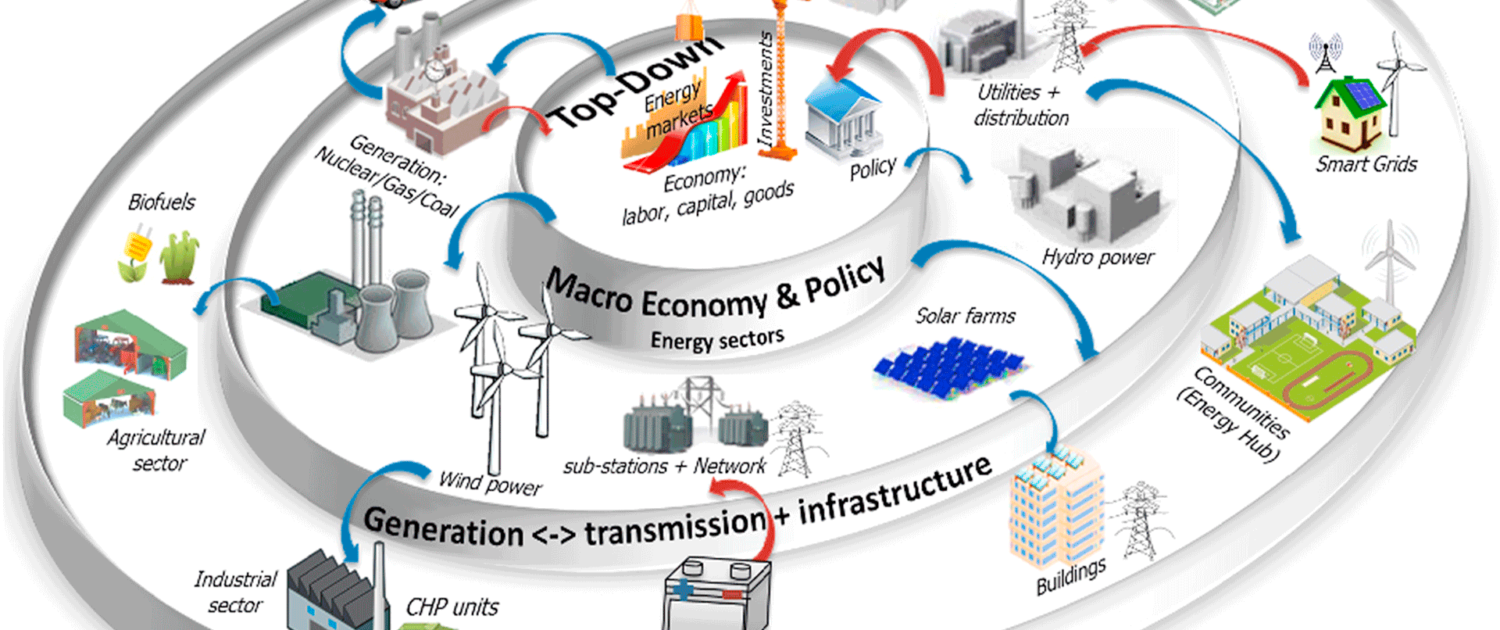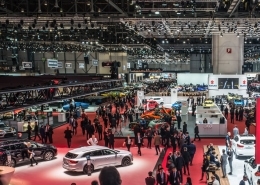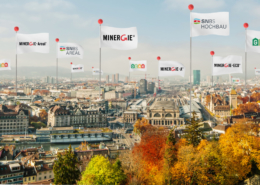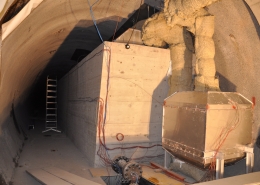ETH Zurich has launched its new modelling platform Nexus-e presented. In future, it will make it possible to analyse the influence of technological, economic and regulatory developments on the energy system of the future.
Nexus-e is being developed by an interdisciplinary research team at ETH Zurich. The Swiss Federal Office of Energy (SFOE) is supporting the project. Anne-Kathrin Faust, Market Regulation Specialist at the SFOE, explains in an interview what the SFOE expects from this new platform.
Energeiaplus: Why did the SFOE support Nexus-e?
Anne-Kathrin Faust: Switzerland's energy system is in a state of upheaval. Climate policy goals and the phase-out of nuclear energy are changing the electricity system in particular. That is why it is important to have reliable models available in order to be able to investigate the influence of various developments. These include rapid technological developments, of course, but also economic and regulatory developments. Improving the quality and capacity of such models is therefore very important. And, of course, the promotion of scientists who can operate and further develop these models.
What distinguishes the Nexus e project?
When the Energy Science Center at ETHZ presented the Nexus-e project to the SFOE, several aspects convinced us at once. In particular, the innovative combination of five different models in one platform. After all, many important issues in the energy sector have both technical and economic dimensions. Nexus-e takes this fact into account. It includes not only techno-economic aspects in its analyses, but also the electricity market, the Swiss economy and the grids. Another major plus point is the modular structure of the platform.
This means that the various model modules can be used to flexibly put together the optimum model framework for specific issues. The platform thus has a broad application potential and further secures the model diversity in Switzerland. Nexus-e also involves many young researchers who have built up a great deal of expertise in this area as part of the project, and are continuing to do so.
What does the SFOE expect from Nexus-e?
The further development of the quality and capacity of the models in Switzerland is very important for us. For our work, we need quantitative scenarios and estimates of the effects of technical, economic and regulatory developments. In order to further develop electricity, grid and energy system models for Switzerland, among other things, the SFOE is involved with the International Energy Agency (IEA), but also within the framework of its research programmes and the pilot and demonstration programme.
In the current highly dynamic energy policy environment, reliable analytical tools are needed to prevent us from flying blind. Diversity is important to us: such complex modelling should not be able to be done by just one provider or research group. The same applies to research and modelling: competition stimulates business!
Who benefits from the Nexus e findings?
The SFOE expects Nexus-e to provide quantitative, robust assessments of developments in the electricity sector, which can serve as a basis for decision-making by politicians, the SFOE and other stakeholders. The Nexus-e platform should also help to further establish research in the field of energy system modelling at ETHZ and make it an internationally recognised contact point for researchers in this area.
How could Nexus-e and the assumptions be further improved?
There is certainly potential in extending the model to other energy sectors. With the net-zero climate target, sector coupling is also gaining strongly in importance in modelling. In view of the decentralisation of the energy system, it would also be exciting to include behavioural economic issues more strongly in the modelling. People do not always make rational decisions when investing in the energy sector!
And of course, Nexus-e relies on important assumptions regarding the developments of the various technologies. Here, the Nexus-e team is in a very privileged position thanks to its connection to the Energy Science Center. There, the latest research in the technical field can be adopted directly.
So there is still room for improvement?
Yes. Like all models, Nexus-e still has room for improvement in many areas. Here, however, the ETHZ team has taken foresight in the model design to ensure that the platform is flexible and changeable. Thanks to its modular structure, Nexus-e offers many possibilities for adding further elements. So we look forward to the further development of the Nexus-e platform.
What is the difference between Nexus-e and the Swiss Federal Office of Energy's "Energy Perspectives 2050+"?
Nexus-e focuses exclusively on the electricity system, whereas Energy Perspectives 2050+ looks at Switzerland's entire energy system. Furthermore, the scenarios in Nexus-e are only illustrative, at least for the time being, to demonstrate the capabilities of the developed platform. Nexus-e cannot (yet) make any statements on the development of non-electricity sectors.
The scenarios in the Nexus-e report are not aimed at achieving the net zero emissions target in 2050. The scenarios merely model developments in the Swiss electricity system under today's legal framework and with certain technological-economic assumptions for the future (which are subject to considerable uncertainty). The Energy Perspectives 2050+, on the other hand, contain target scenarios that model paths towards the realisation of net zero emissions in 2050.
The results of Nexus-e and Energy Perspectives 2050+ can therefore only be compared to a very limited extent.
The interview was conducted by Marianne Zünd, Head of Communication, Swiss Federal Office of Energy
 Illustration: Nexus-?e / ETH Zürich
Illustration: Nexus-?e / ETH Zürich
 Mobilität im Wandel
Mobilität im Wandel  MinergieHarmonisierung der Schweizer Gebäudelabels: Bilanz ein Jahr nach der Einführung
MinergieHarmonisierung der Schweizer Gebäudelabels: Bilanz ein Jahr nach der Einführung  ShutterstockBFE-Forschungsprogramm «Gebäude und Städte»: Aufruf zur Projekteingabe
ShutterstockBFE-Forschungsprogramm «Gebäude und Städte»: Aufruf zur Projekteingabe  Benedikt VogelL'air comprimé stabilise le réseau
Benedikt VogelL'air comprimé stabilise le réseau 
 BFE
BFE Clemens Bolli
Clemens Bolli
TESLA will 2022 halbe Million Elektroautos in Grünheide bauen.
Dadurch steigt der Bedarf von AKW, weil die halbe Welt konsumiert jedes Jahr 8760 Stunden geregelte Stromleistung ohne Unterbruch.
Produzierte Stromleistung und Verbrauch müssen jederzeit gleich stark sein.
Künftig steigt der Elektrische Leistungsbedarf wegen eMobilität, Wärmepumpen, Speicher, Digitalisierung und Ersatz für CO2, usw.
Rund 2000 bzw. 4000 Stunden pro Jahr sind Sonne bzw. Wind verfügbar, aber mit x-tausend Leistungsschwächen (Flatterstrom).